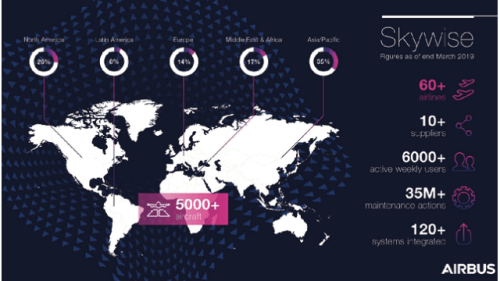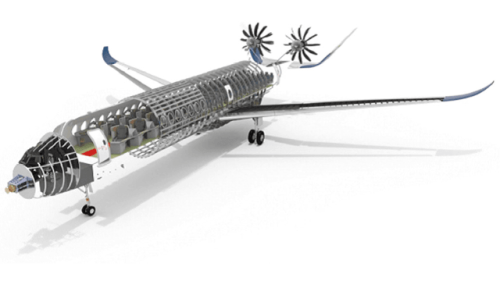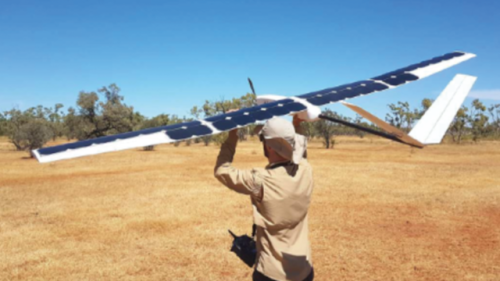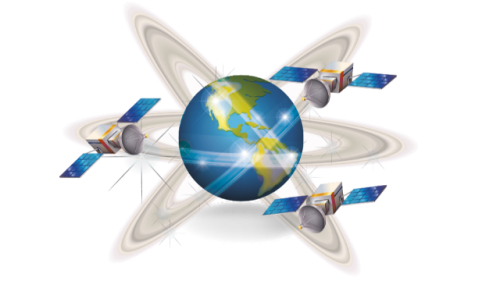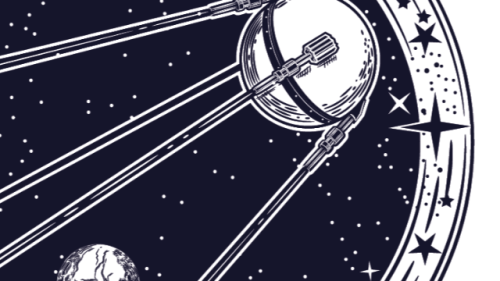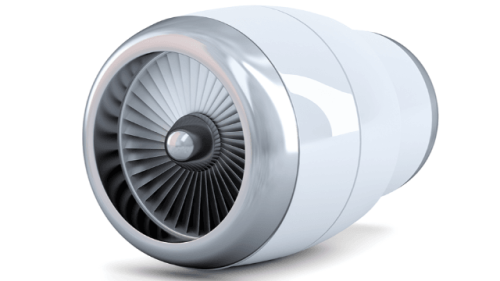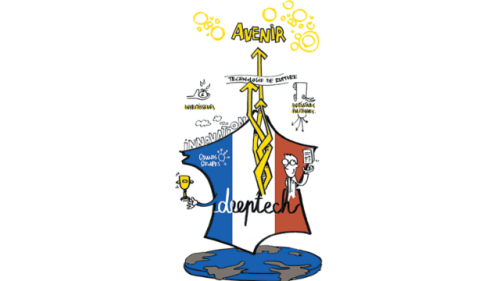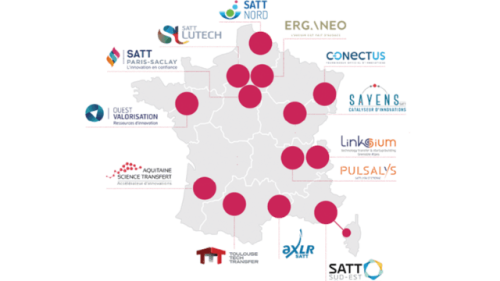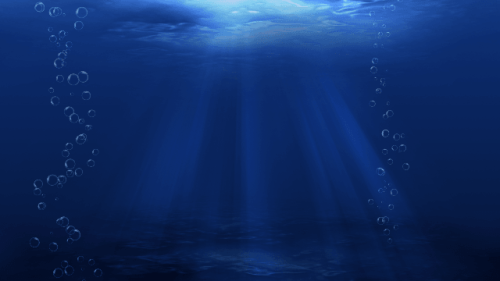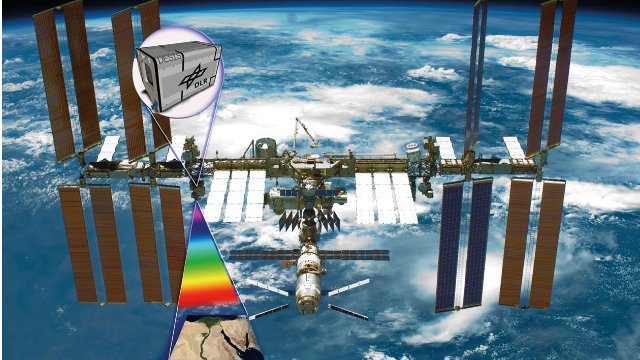
The ISS has a new colorful eye
The number of sensors in space for Earth environmental observation is growing. The International Space Station is an excellent point of observation for new technologies such as the DLR Earth Sensing Imaging Spectrometer (DESIS).
OBSERVING FROM THE ISS
Like many other satellites, the International Space Station (ISS) is occasionally visible to the naked eye as a bright point of light moving rapidly across the sky, and spotting it in the night sky is not an uncommon hobby. Reversing the point of view, the ISS is a unique platform for earth remote observation: being the only one with a human crew, its flexibility can lead to improved data acquisition for disaster response.
Modern technologies extend the capabilities of earth observation sensors beyond what an astronaut could record with a standard photographic equipment. One example is the use of imaging spectrometry, also known as hyperspectral remote sensing. Two imaging spectrometers are currently mounted on the ISS: the Japanese HISUI sensor expected to start nominal observation in the next months, and the DLR Earth Sensing Imaging Spectrometer (DESIS), installed in August 2018 by the astronauts and currently the only operative hyperspectral sensor on the station.
HYPERSPECTRAL EARTH OBSERVATION SENSORS
Imaging spectrometry measures the reflected solar radiation for a target on the Earth’s surface across a broad and finely sampled range of the solar spectrum. This means going beyond the limits imposed by the human eye in two ways: firstly, information can be acquired in the infrared range which is invisible to us; secondly, the intensity of reflected light which we perceive as a single color (say green light) can be further separated in several components. This way, the spectra observed from the sensor can be regarded by the machine as an incredibly high amount of « colors », which can be associated to the properties of targets on ground. As an imaging spectrometer, DESIS is therefore capable of identifying materials such as minerals in rocks and soils, mapping vegetation types and their health status, and monitoring the quality of water bodies and their constituents.
The mission is a cooperation between the German Aerospace Center (DLR) and the US company Teledyne Brown Engineering. The scientific community can task the DESIS sensor for free and access its whole archive until the end of the mission, by sending a short description of the envisaged use of the data to be reviewed by the DESIS science team.
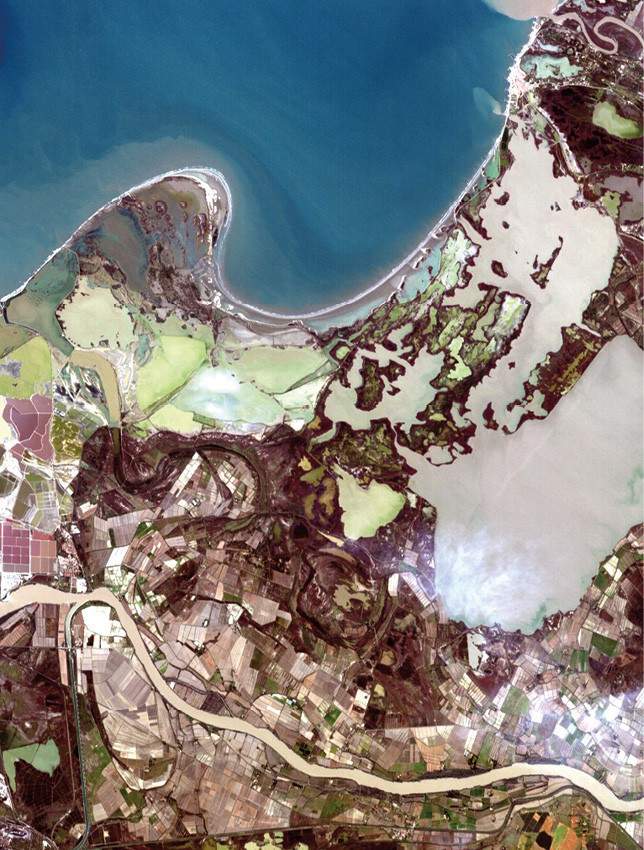 The Camargue as seen from DESIS |
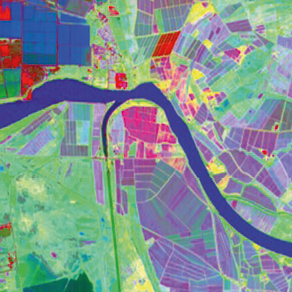
Detail showing differences in cropson aprocessed
subset of the Camargue image.
|
A LOOK ON THE CAMARGUE
In this example we show a DESIS image acquired on the Camargue, a natural region located south of Arles, France, between the Mediterranean Sea and the two arms of the Rhône delta. The small coastal urbanization of Saintes Maries de la Mer is visible on the top right. The area boasts a rich biodiversity, with the marshes dominating the area providing one of the few European habitats for the greater flamingo. Studies carried out in recent years using satellite images on the area include flood monitoring, phenological analysis of paddy rice, and agricultural classification.
Each pixel in the image is represented as a combination of different brightness of blue, green and red, simulating how a human would perceive the scene with his own eyes. But processing DESIS data can reveal many additional details about the differences in land cover within the area. As it is not possible to visualize at the same time all DESIS finely sampled spectral bands (which are more than 200), we can try to « compress » all the differences within the image using three synthetic bands. These are assigned to the red, green, and blue channels, with such « false colors » trying to exploit all the information in DESIS, including the infrared range. The resulting representation for a subset on the bottom left of the area appears very colorful, revealing a great variability in the types and characteristics of crops, as different colors represent different cultivations or differences within them, which can be subsequently more closely analyzed. Such differences are less obvious in the natural color image. On the other hand, pixels belonging to a more homogeneous ground cover class, such as the river, are represented with a similar color.

Daniele CERRA
is a research scientist with the Department of Photogrammetry and Image Analysis at the German Aerospace Center (DLR), Oberpfaffenhofen, Germany. He received the Ph.D. degree in image and signal processing from Télécom Paris in 2010. His research interests include imaging spectrometry and information theory.
 www.dlr.de/eoc/desktopdefault.aspx/tabid-13614
www.dlr.de/eoc/desktopdefault.aspx/tabid-13614







